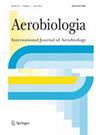Comparison of computer vision models in application to pollen classification using light scattering
Abstract
This study investigates the use of pollen elastically scattered light images for species identification. The aim was to identify the best recognition algorithms for pollen classification based on the scattering images. A series of laboratory experiments with a Rapid-E device of Plair S.A. was conducted collecting scattering images and fluorescence spectra from pollen of 15 plant genera. The collected scattering data were supplied to 32 different setups of 8 computer vision models based on deep neural networks. The models were trained to classify the pollen types, and their performance was compared for the test sub-samples withheld from the training. Evaluation showed that most of the tested computer vision models convincingly outperform the basic convolutional neural network used in our previous studies: the accuracy gain was approaching 10% for best setups. The models of the Weakly Supervised Object Detection approach turned out to be the most accurate, but also slow. However, even the best setups still did not provide sufficient recognition accuracy barely reaching 65%–70% in the repeated tests. They also showed many false positives when applied to real-life time series collected by Rapid-E. Similar to the previous studies, fusion of the new scattering models with the fluorescence-based identification demonstrated almost 15% higher skills than either of the approaches alone reaching 77–83% of the overall classification accuracy.


 求助内容:
求助内容: 应助结果提醒方式:
应助结果提醒方式:


